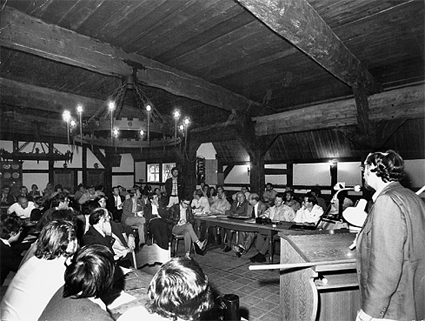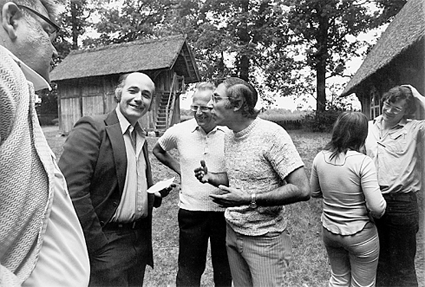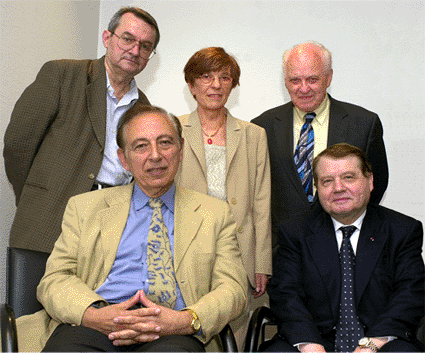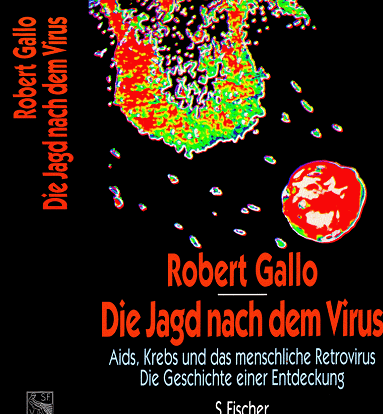|
|
|
Laudatio |
|
Respected Senator Dräger, if we look back on the career of a successful scientist we do it with the wisdom of hindsight. Such a career appears straightforward and even appears to follow a logical development. Of course this is not clear for the one who is in the middle of this process and has to struggle to get success and recognition. Prof. Gallo's career is a good example for this. It has taken long for him to find his ultimate success and recognition and one of the most remarkable features of his career is his perseverance in reaching the ultimate aim when nobody was willing to believe that there are retroviruses in man. A early formative event in his life was the death of his little sister from leukaemia when he was 12 years old, at that time there were not the curative possibilities available that we have today. This event has brought him into contact with medicine and he worked already in school times in the hospital and the department of pathology. During his college time he worked in the laboratory with bone marrow cells and was already decided to become a scientist. After graduating from University and after an internship as a paediatrician (where he again experienced the limitations of medicine towards leukaemia) he joined in 1965 the National Cancer Institute of the NIH and after 7 years became Head of the Laboratory of Tumor Cell Biology. After 30 years at the NIH he became in 1996 Director of a newly established institute, the Institute for Human Virology at the University of Maryland, where he is Professor of Medicine and Microbiology The theme of his career was already set so early: the basic biology
of human blood cells and there normal and abnormal behaviour. In these early years of tumor virology it had been found that retroviruses
are the cause of leukaemia in a number of animal species, in birds
the avian leukosis and leukaemia viruses, also in cats, cattle,
mice, rats, even in primates. In 1970 Howard Temin discovered the
reverse transcriptase that made it possible to specifically search
for retroviruses. Many groups including Prof. Gallo's started to
search for retroviruses in man but this turned out to be very frustrating
efforts. All other groups gave up but Gallo's group still continued,
virtually alone. I remember from my time as a young postdoc in virology
how discredited the idea of human retroviruses was. This ability to grow T cell in culture now allowed in 1980 the isolation of a human retrovirus, human T-lymphotropic virus (HTLV-1) from leukaemia cells (PNAS 1980,;77:7415). In a series of papers Gallo could show that HTLV-1 is the cause of an adult T cell leukaemia that is endemic in Japan and the West Indies. Two years later they discovered a second retrovirus HTLV-2. It was now proven that there were retroviruses in man. Since such retroviruses in animals cause also profound immunodeficiency Gallo and colleagues suggested that similarly a human retrovirus might be involved in the pathogenesis of the novel disease AIDS. This T cell culture system for the isolation and propagation of human retroviruses then 1983 used to discover HIV independently by Gallo's laboratory and the group from Pasteur. After this highlight additional breakthroughs followed. The isolation of a new human Herpesvirus, HHV-6, the cause of Roseola infantum, major studies on the pathogenesis of HIV-infection and the molecular biology of HIV, on Kaposi-sarcoma and then on new strategies for therapy and prevention. In recent years chemokines were discovered by his group as suppressive factors for HIV, and innovative steps in development of a vaccine against HIV, all this published in the highest ranking journals. This morning at 11 h Medline showed 855 publications of Prof. Gallo, it might be more meanwhile. Prof. Gallo is one of the most renown scientists of the world, he was No. 1 on world list as most referenced scientist between 1980 and 1990 and is still in the top group. The number of honours and awards he has received is impressing, there are 15 honorary doctorates, many honorary memberships in scientific societies and he is a recipient of many very prestigious awards. As the Dean has indicated. although his scientific merit would
be enough reason, there are several reasons why just the Hamburg
School of Medicine has decided to offer him an honorary doctorate.
First there is a longstanding cooperation in the organization of
the Meeting "Modern Trends in Human Leukemia" that takes
place since 1973 in Wilsede. Robert Gallo has in fact been one of
the initiators of this meeting in 1972 together with Rolf Neth and
has since been a true friend of this meeting and a frequent guest
speaker.
Very noteworthy is the cooperation on the field of AIDS research and diagnostics. Prof. Gallo has very shortly after the discovery of HIV given his HIV-infected cell lines to the Institute of Medical Microbiology to use without any restrictions. This has enabled the Institute to perform already in early 1985 when commercial tests were not available to perform screening of blood donors. In fact several HIV-infected donors could be identified and excluded and this has certainly saved several lives. And also I am proud that there are longstanding scientific cooperations
with the Bernhard Nocht Institute - already since 1985 the pathologists
Klara and Paul Racz cooperate on the persistence of HIV in lymph
nodes. Here you see Dr. Gallo and his longstanding coworker Michael
Popovic with Klara and Paul Racz and Luc Montagnier on the occasion
of the German AIDS Congress in 2003 in Hamburg.
Bernhard Fleischer References :
Berlin
2003:
Hamburg
2003
|
||||||||||||||||||||||||||||||||||||||||||||




